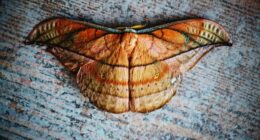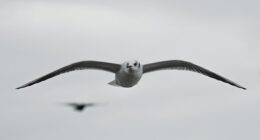Pests and insects are both living creatures that exist in the natural environment. Pests can be defined as any organisms that cause harm to humans or other animals, while insects are a broad category of small arthropods with three pairs of legs and two antennae. While some forms of pests can also be considered insects, they differ from one another in many ways, such as size and behavior.
What are pests?
(Image by Robert Owen-Wahl from Pixabay )

Pests are organisms that are considered harmful or unwanted because they can damage crops, property, or human health. Common pests include insects, rodents, birds, and other animals that can cause damage or spread disease. Pests can be found in homes, gardens, farms, and other areas, and can cause a variety of problems
What are insects?
(Image by Wild Pixar from Pixabay )

Insects are small animals that have six legs, three body parts, and a pair of antennae. They are the largest group of animals on Earth and can be found in nearly every environment. Insects play an important role in the food chain and many are beneficial to humans, providing services such as pollination and pest control. Some insects, however, are considered pests because they damage crops or spread disease.
Pests Vs. Insects – Key differences
Pests and insects are related concepts, but they are not the same thing.
Insects are a group of small, six-legged animals with three body segments (head, thorax, and abdomen) and a hard exoskeleton. Insects include many different types of creatures, such as butterflies, bees, beetles, and ants. While many insects are harmless or even beneficial, some can be pests when they invade homes, gardens, or crops.
Pests, on the other hand, are organisms that are considered harmful or unwanted because they can damage crops, property, or human health. Pests can include insects, but they can also include other animals, such as rodents, birds, and other wildlife. Pests are generally defined as organisms that cause problems for humans, and they can be found in homes, gardens, farms, and other areas. Some examples of pests include termites, mice, cockroaches, and bed bugs.
Insects are a specific group of animals, pests are a broader category that includes any organism that can cause damage or harm.
How to get rid of pests and insects
There are many ways to get rid of pests and insects, but the most important thing is to identify what kind of pest or insect you are dealing with. Once you know what you are dealing with, you can take the appropriate steps to get rid of them.
If you have an infestation of pests or insects, the first thing you should do is contact a professional pest control company. They will be able to identify the pests and insects and determine the best course of action for getting rid of them.
There are also many DIY methods for getting rid of pests and insects. However, it is important to note that not all DIY methods are effective against all types of pests and insects. If you are unsure about a particular method, it is always best to consult with a professional before proceeding.
What are the different types of pests?
Insects: This group includes a wide range of pests, including ants, termites, bed bugs, cockroaches, fleas, ticks, mosquitoes, and many others.
Rodents: This includes mice, rats, and other types of rodents that can invade homes and cause damage.
Birds: Birds can be pests when they build nests in areas where they are not wanted, such as in attics or on roofs.
Wildlife: This includes animals such as raccoons, skunks, squirrels, and opossums that can cause damage to homes and gardens.
Weeds: While not technically animals, weeds can be considered pests when they invade gardens or other areas where they are not wanted.
Microorganisms: This includes pests such as bacteria, viruses, and fungi that can cause disease or damage to crops or other plants.
Reptiles: Snakes and other reptiles can be pests when they enter homes or other buildings.
Nuisance animals: This includes animals that are not necessarily harmful, but can be a nuisance, such as bats, moles, and gophers.
What are the different types of insects?
There are many different types of insects, and they can be classified in a number of ways. One common classification is by their feeding habits, which divides them into herbivores, carnivores, and omnivores. Another is by their habitat, which can be either terrestrial or aquatic. Insects can also be classified by their life cycle, which can be either complete or incomplete.
Herbivorous insects include those that feed on plants, such as aphids, leafhoppers, and caterpillars. Carnivorous insects include those that feed on other animals, such as wasps, ants, and spiders. Omnivorous insects are those that feed on both plants and animals, such as cockroaches and beetles.
Terrestrial insects are those that live on land, such as most ants, bees, flies, and grasshoppers. Aquatic insects are those that live in water or moist environments, such as dragonflies, mayflies, midges, and water beetles.
Insects can also be classified by their life cycle. Complete metamorphosis consists of four distinct stages: egg, larva, pupa, and adult. In contrast, incomplete metamorphosis consists of three stages: nymph (which closely resembles the adult stage) and adult.
| PESTS | INSECTS |
|---|---|
| Bed bugs | Ants |
| Cockroaches | Bees |
| Termites | Butterflies |
| Ants | Dragonflies |
| Fleas | Grasshoppers |
| Ticks | Ladybugs |
| Mosquitoes | Mosquitoes |
| Mice | Praying mantises |
| Rats | Spiders (arachnids) |
| Flies | Wasps |
The disease caused by pests and insects?
Pests and insects can transmit diseases to humans and other animals through their bites, feces, or contact with contaminated surfaces. Some examples of diseases caused by pests and insects include:
- Lyme disease: caused by the bite of an infected blacklegged tick.
- Malaria: caused by the bite of an infected female Anopheles mosquito.
- Zika virus: transmitted by the bite of an infected Aedes mosquito.
- Dengue fever: caused by the bite of an infected Aedes mosquito.
- Typhus: transmitted by the bite of infected fleas, lice or mites.
These are just a few examples of diseases caused by pests and insects. It’s important to take steps to prevent exposure to pests and insects to reduce the risk of getting a disease. This can include using insect repellent, wearing protective clothing, and keeping your environment clean and free of standing water or other potential breeding sites for pests.
Are there any benefits from pests and insects to nature?
Yes, pests and insects can provide important benefits to nature. Here are a few examples:
- Pollination: Many insects, including bees, butterflies, and moths, play an important role in pollinating plants. Without these insects, many plant species would not be able to reproduce, which would have significant impacts on ecosystems.
- Decomposition: Insects such as beetles and ants play a vital role in breaking down dead plant and animal matter, which helps to recycle nutrients back into the soil. This process is critical for the health of ecosystems and for the growth of new plant life.
- Food source: Many animals, including birds, reptiles, and amphibians, rely on insects as an important source of food. Insects can also be a source of food for humans, and are an important part of many traditional diets.
- Biological control: Some insects can be used as a form of natural pest control, helping to manage populations of other insects or pests that can damage crops or harm the environment. For example, ladybugs are often used to control aphid populations in gardens and on farms.
Pests and insects can sometimes be viewed as a nuisance or a threat, they play important roles in maintaining the health and balance of ecosystems, and can provide significant benefits to nature.
Featured Image By – Image by Erik Karits from Pixabay








